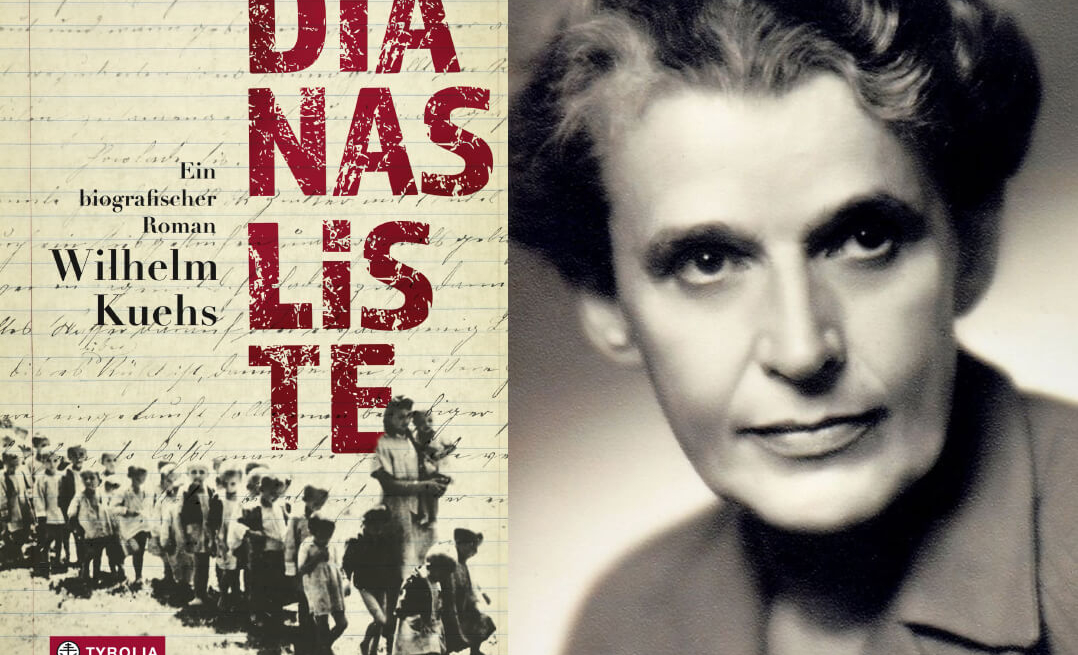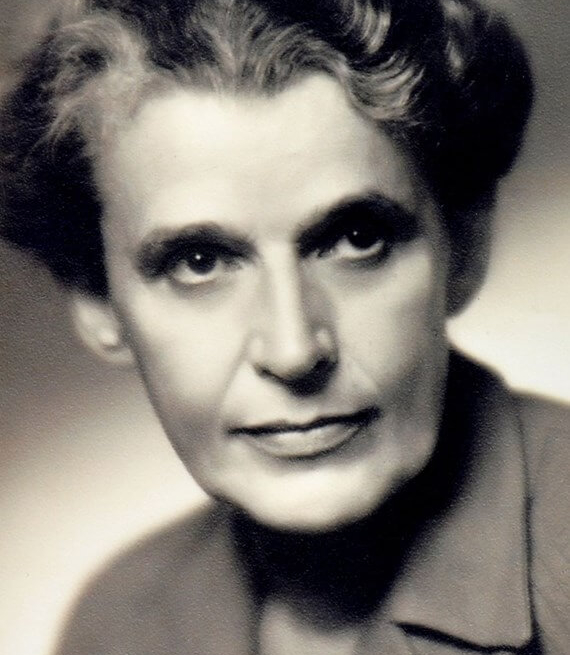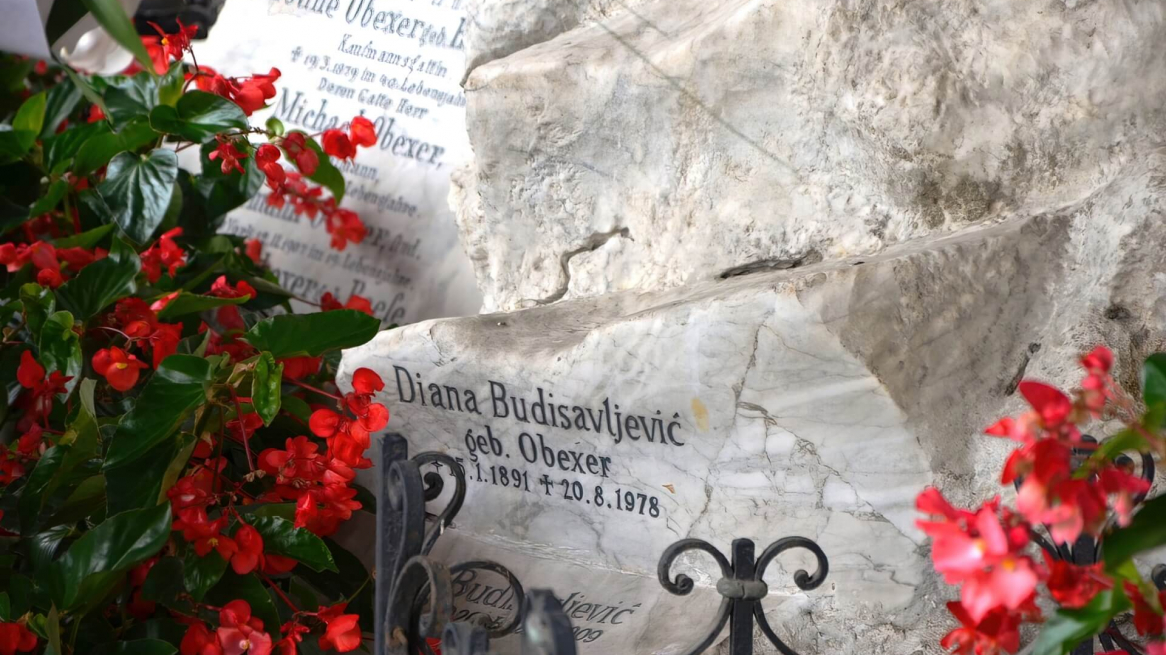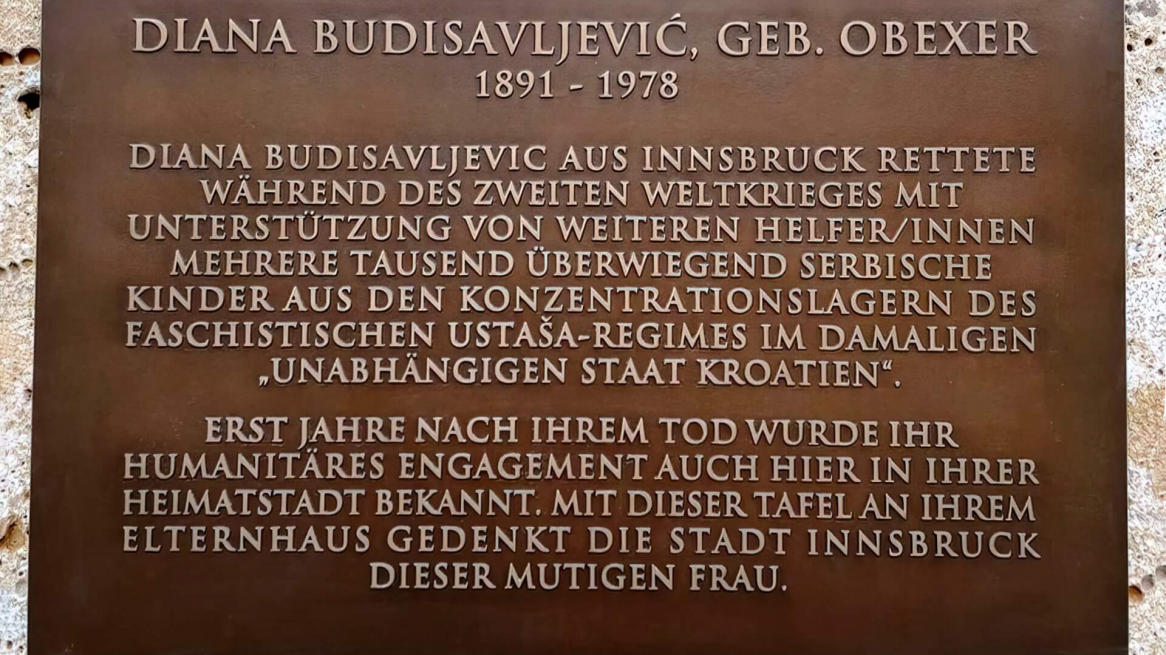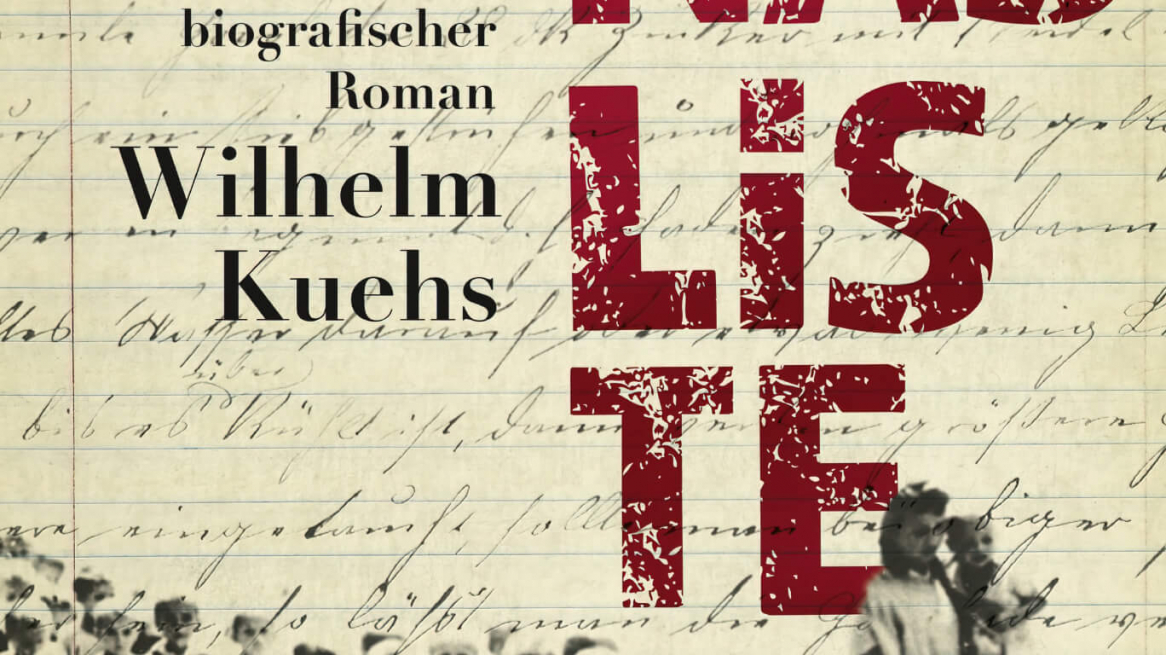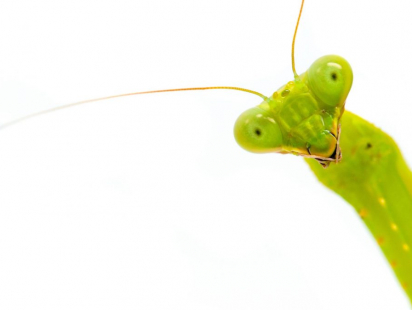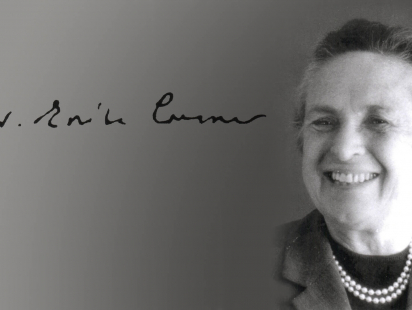Her life reads like a thriller: Innsbruck-born Diana Budisavljević saved thousands of children from certain death during World War II. A biographical novel tells about her heroic deeds in silence. The title: "Diana's List" - in reference to Steven Spielberg's Oscar-winning work "Schindler's List." For those who are as fascinated by the lady as I am and would like to follow in her footsteps: Budisavljević's grave is located in the cemetery of Innsbruck's Wilten district. A memorial plaque in her honor adorns the "Obexer House" in Maria-Theresien-Strasse. 2021 was the 130th anniversary of her birth. I would like to take this opportunity to tell you about the eventful life of Diana Budisavljević.
A GIRL FROM INNSBRUCK
Diana Budisavljević was born in Innsbruck as Diana Obexer. In 1891, she was born in the Tyrolean capital as the daughter of the merchant Max Obexer. Her birthplace is located in Maria-Theresien-Strasse. She was an activist and humanitarian who saved the lives of thousands of Serbian children during the Second World War.
Many will ask themselves, who is this woman? In fact, Diana is virtually unknown among Tyroleans and Innsbruckers. All the more I am happy to write a blog about her, so that this, practically forgotten heroine, will be remembered.
TO CROATIA FOR LOVE
Diana Obexer worked as a nurse in the Innsbruck City Hospital. It was here that she met Julije Budisavljević, a Serbian from Croatia, who completed his specialist studies here. in 1917, the Catholic Diana and the Serbian Orthodox Julije married and moved to Zagreb a short time later.
THE USTAŠA REGIME 1941-1945
After the invasion of Yugoslavia by German troops, independent Croatia was proclaimed. A fascist vassal state of Hitler-Germany under the leadership of Ante Pavelić, the leader of the Ustaša movement. The latter returned from exile to Zagreb and declared himself the new head of state. From then on, the racial laws of the Third Reich were also in force in Croatia and the Ustaša regime began persecuting Jews, Serbs, Roma and Croatian opponents of the regime. While Hitler wanted a Jew-free Germany, a Serb-free Croatia was important to Pavelic. At that time, there were about two million people of Serbian descent living in Croatia. With the help of the so-called one-third solution, one-third of the Serbs were to convert from Serbian Orthodoxy to Catholicism. For another third, expulsion was planned, and for the last third, murder. Within a few months in 1941, up to 200,000 Serbs lost their lives in ethnic cleansing, and many able-bodied Serbs were deported to Germany for forced labor.
Concentration camps also existed under the Ustaša regime, the largest of which was in Jasenovac with another five sub-camps, such as the former monarchy prison in Stara Gradiška.
ACTION DIANA BUDISAVLJEVIĆ
Diana Budisavljević learned about the conditions and the imprisoned Serbian and Jewish women and children in the Loborgrad camp, located near Zagreb, at the end of October 1941. She decides to help them, but it is almost hopeless at the beginning. At that time, the Jewish community in Zagreb was able to provide assistance for the imprisoned Jewish women and children, but no one was responsible for the Serbian women and children. They did not receive any support. Budisavljević wanted to help them and sought support from the Jewish community. The Jewish Community Ustaša regime agreed to take Diana's relief supplies to the Loborgrad camp.
Diana began to collect all sorts of useful things for the detainees. Straw bales, blankets, food and clothes. Word quickly spread, especially among the Serbs of Zagreb. More and more people knocked on Diana's door and dropped off their donations. Everything had to be done quickly and anonymously, because no one wanted to attract negative attention. After all, if you were of Serbian origin, you could be arrested quickly.
When Diana's first delivery arrived at the camp, she learned that practically none of it reached the Serbian women and children. The camp director had the aid shipment confiscated, taken back to Zagreb, and sold. Diana Budisavljević was dejected, but did not want to give up. She now tried to gain access to the camp through an official permit and legalize her action.
THE FIRST SUCCESSES
She appealed to the Archbishop of Zagreb, to the Protestant Bishop of Zagreb, and was always rebuffed. Knowing she was in great danger, Diana Budisavljević did not give up trying to legalize her action. Only in this way could she be sure that her help would really benefit Serbian women and children. She approached the regime directly - a courageous act, not to say audacious. After many requests and discussions, she received permission in February 1942 to send relief supplies to Loborgrad and to take five boys and six girls out of the camp. Her persistence was rewarded for the first time.
Budisavljević also spent a lot of time at the Zagreb Central Station. Here she cared for people who were to be deported to Germany for forced labor. When one day 400 children came back from Germany, because they were too weak for forced labor, she managed to place them in the Zagreb Home for the Deaf, knowing that otherwise they would have ended up in a Croatian concentration camp. At the same time, she learned about many Serbian children imprisoned in the Stara Gradiška concentration camp. The placement in the home was made possible by a senior employee of the Croatian Ministry of Health, Kamilo Bresler. Bresler turned out to be one of Diana's greatest supports in her relief efforts from that point on. He was very respected among the Croatian population, and through his help it was possible to place the liberated children in families.
The Stara Gradiška concentration camp was one of the subcamps of the largest camp, the Jasenovac concentration camp. At least 90,000 Serbs, Jews and Roma were murdered there during the Ustaša regime, some counts even speak of well over 100,000. Up to 20,000 children were imprisoned in Stara Gradiška. Budisavljević wanted to save them as well.
CHILDREN FROM THE CONCENTRATION CAMP
In June 1942, Diana Budisavljević met Gustav von Kocijan, a Wehrmacht officer. Diana confides in him and reveals that she wants to rescue Serbian children from the concentration camp. Highly risky! But the officer agrees to help her. Through connections they manage to get permission from the Ustaša police. The representatives of the Third Reich put pressure on the chief of police Slavko Kvaternik. He was also the head of all concentration camps in Croatia. Thus, Budisavljević managed to get children out of Jasenovac and the subcamps. With the help of the Red Cross and Caritas, thousands of children were placed in families and saved from certain death in concentration camps.
THE LEGACY OF DIANA BUDISAVLJEVIĆ
Diana Budisavljević rescued about 15,000 Serbian children from the Ustaša concentration camps from 1941-1945 - unfortunately, an exact number is not known.
in 1972 she returned to Innsbruck, where she died in 1978. She is buried at the cemetery in Wilten. Her heroic deeds remained hidden. Until the Croatian State Archives and the Jasenovac Concentration Camp Memorial published Diana's diary in 2003. And thus brought the memory of this special woman back into consciousness.
The Innsbruck City Council unanimously decided, on the initiative of the Serbian Orthodox Youth Association Innsbruck - SPOJI and the Social Democratic Freedom Fighters Association Tyrol, to award Diana Budisavljević with the Innsbruck Cross of Merit.
The kindergarten in the district of Reichenau bears the name of Diana Obexer-Budisavljević and honors the courageous Innsbruck woman for her heroic rescue action.
In 2012, the Serbian Orthodox Church posthumously awarded Diana Budisavljević the "Empress Milica" Order. The Serbian State awarded Diana Budisavljević with the "Miloš Obilić Medal" in 2012. The then President Boris Tadić awarded her the medal posthumously.
MEMORIAL PLAQUE IN INNSBRUCK
A memorial plaque was erected at Diana Budisavljević's birthplace, the so-called Obexer House in Maria-Theresien-Strasse, and unveiled on April 7, 2021. Controversies about the wording triggered a public discussion in the run-up. Stone of contention: should the Serbian origin of the children be mentioned? Despite critical voices, historians and experts spoke out in favor of it in the dialogue. The text was adapted, the Serbian origin of the children is mentioned. With the memorial plaque, Diana Obexer-Budisavljević has been given a worthy place to preserve the memory of her heroic deeds.
BIOGRAPHICAL NOVEL "DIANAS LISTE"
in 2017 the biographical novel "Dianas Liste" by Wilhelm Kuehs was published by Tyrolia Verlag.
Available for order in the Tyrolia Onlineshop
MORE ON THE TOPIC:
Rate this article
Show me the location on the map
Professional photographer from Innsbruck, nature enthusiast and animal lover.
Similar articles
The zoo is at the cradle of my love for Tyrol. It awakened in me the longing…
I commute a lot between Innsbruck and Vienna and I know the advantages of both cities. Many…
The darker and colder it gets outside, the cozier and cozier it gets inside. When, if not…
The physical chemist Erika Cremer (1900-1996) is one of the most important research personalities of the University…

